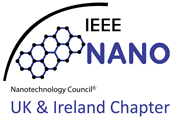Technical Talk | Breaking the Barriers of Photodetection and Photovoltaics using Nanowire Devices by Dr Vidur Raj, University of Glasgow

In the first half of the talk the presenter will discuss radial junction III-V semiconductor devices and show how a study conclusively showed the absolute superiority of radial junction nanowire devices over their thin film or axial junction counterparts, especially when the absorber lifetime is extremely low. The proposed device holds enormous promise for III-V based photovoltaics and photodetectors, as control of absorber quality at the nanoscale remains one of the biggest technical challenges in the realization of nanoscale optoelectronics.
In the second half the presenter will discuss single photon detectors based on superconducting nanowires for relatively challenging mid-IR single photon detection. They will show recent results on the fabrication of a 6×6 individually addressable superconducting nanowire array for mid-IR applications, and discuss some new optical designs being used for enhanced optical absorption in the mid-infrared regime. Recent lab developments in designing cryogenic circuits for SNSPD signal readouts will also be discussed before concluding with future research problems that are currently being worked on.
This is an in-person event and registration is required.
Free pre-booked parking: Please contact claudia.gathercole@ntu.ac.uk to request a car parking space in the visitor parking. It is accessed using the main gate. After parking, please make your way through the open plaza. You will find the Teaching and Learning Building ahead of you.
About the Speaker:
Dr Vidur Raj completed his PhD followed by a two year postdoc at the Australian National University in the group of Prof Chennupati Jagadish. His PhD work is the first detailed investigation of the fabrication of high efficiency solar cells using low-lifetime III-V absorber layers. During his postdoc at ANU, he reported the world’s first self-powered single photon detector, and the world’s highest filling ratio nanowire array for the growth of a highly interconnected neural network.
He is currently a postdoctoral research associate working on “Superconducting single photon detectors” at the University of Glasgow.
Vidur has published more than 20 research articles in top journals, 17 of which are the lead author. He has also published several co-author publications and presented at conferences and seminars worldwide. Additionally, he has served as an invited reviewer for about 20 journals and has given invited talks at reputed universities and conferences. Vidur’s research interests range from nanoscale III-V optoelectronics to neuroscience and superconducting devices for quantum computing and communications.


